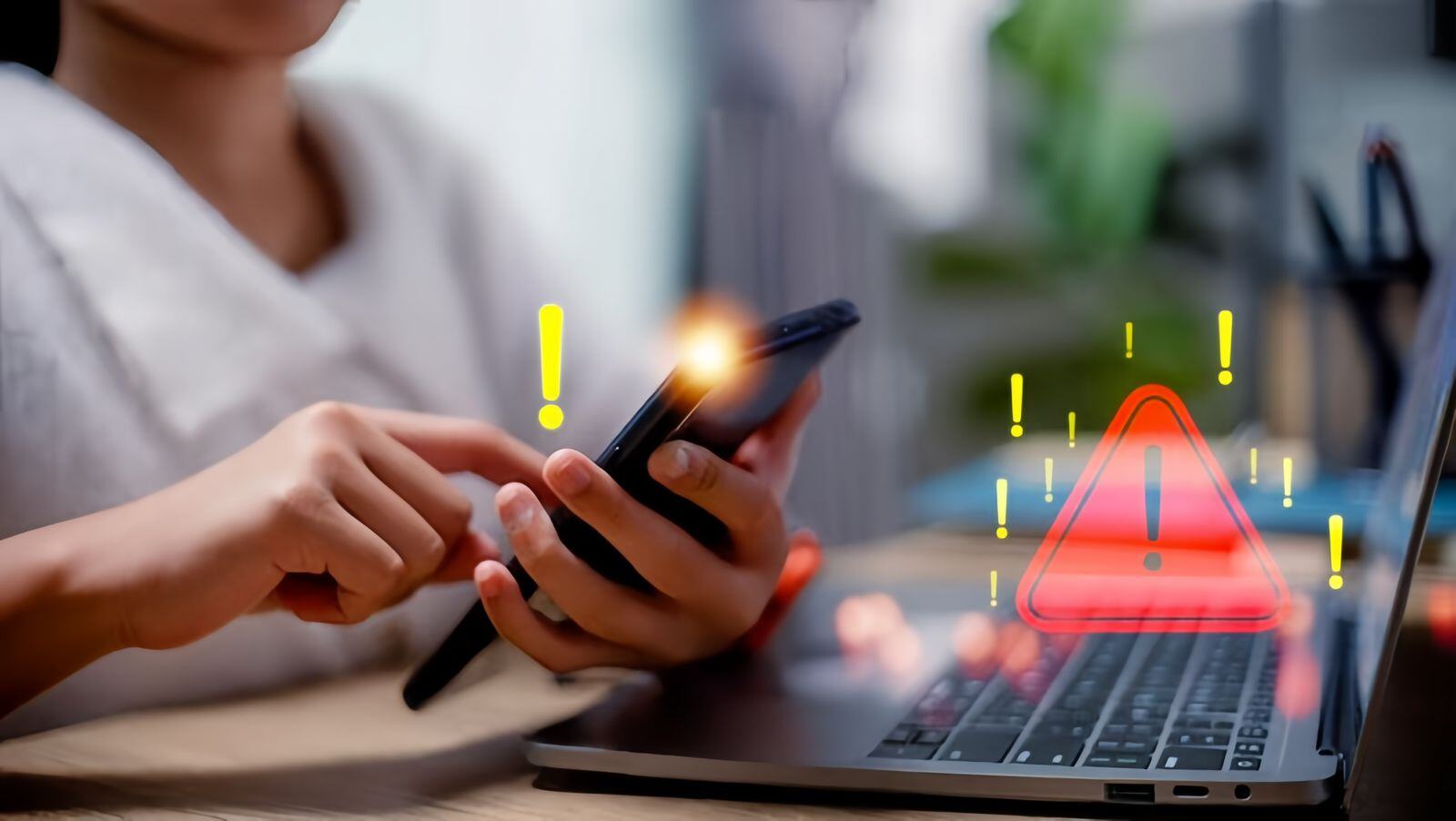Doxxing: What Is It and How to Avoid It?
Read Time 6 mins | 24 Feb 2025 | Written by: Nur Rachmi Latifa

Doxxing is the act of collecting and publicly sharing someone's personal information online without their consent, often with a specific intent that harms the victim. In simple terms, "dox" is short for "documents," referring to data or information that is exposed to the public. Understanding what doxxing is has become crucial in today’s digital era, as this threat is becoming more frequent. With the increasing use of the internet and social media, many individuals unknowingly leave behind digital footprints that attackers can exploit. Doxxing poses serious risks, including threats to physical safety, defamation, and even identity theft. Therefore, learning about doxxing and how to protect yourself from such attacks is essential for maintaining your privacy and security in the online world.
What Is Doxxing?
Doxxing is the act of collecting, analyzing, and publishing someone's personal information without their consent, often with malicious intent. In this context, “dox” is short for “documents,” referring to sensitive information such as full names, home addresses, phone numbers, email addresses, workplace details, and even financial data. Perpetrators of doxxing typically exploit the victim’s digital footprint and publicly available data or gain access through hacking. This type of attack has become a serious threat, especially in today’s digital era, where almost everyone has an online identity that can be exploited.
The methods used in doxxing vary widely, ranging from deep social media searches and analyzing leaked databases to hacking personal accounts. Some attackers even use social engineering techniques to deceive victims or third parties into revealing additional information.
A real-world example of doxxing involved a journalist who became a target after publishing a controversial article. Their private information, including their home address and phone number, was shared on online forums, leading to violent threats from the public. This case highlights how doxxing can cause emotional distress, physical danger, and significant reputational damage to its victims.
Read: Data Security in Remote Work: Tips You Should Know
Why Is Doxxing Dangerous?
Doxxing is not just a violation of privacy—it is a real threat to a person’s safety and well-being. When personal information is published without consent, the risks to both physical and emotional security increase significantly. Perpetrators often use this information for intimidation, harassment, or even direct violence. For example, exposing someone’s home address or phone number can make them vulnerable to unwanted contact, threats, or even physical harm from individuals with malicious intent. The emotional impact of doxxing is also severe, leading to fear, stress, and trauma—especially when the threats are ongoing or involve family members.
Additionally, doxxing can permanently damage a victim’s reputation, particularly if the leaked information includes false accusations or sensitive content taken out of context. In some cases, doxxing even results in professional consequences, such as job loss or damaged business relationships. For instance, an employee who is doxxed due to personal opinions shared on social media may face public backlash or workplace retaliation.
Therefore, doxxing does not only target individuals—it can also disrupt their social and professional environments, making it one of the most dangerous digital threats today.
Tips to Avoid Doxxing Attacks
Protecting yourself from doxxing requires a high level of awareness regarding the digital footprint you leave behind every day. Even seemingly harmless information—such as your full name, location, or photos—can be exploited by doxxers to invade your privacy. Here are some practical steps to prevent yourself from becoming a target of doxxing:
Protect Your Personal Data
Never share sensitive information on public platforms, even if they seem secure. Data such as your home address, phone number, or personal email should not be posted on social media or online forums. Additionally, use pseudonyms or anonymous usernames to keep your identity protected. Review the privacy settings on all your social media accounts to ensure that only trusted individuals can access your personal content or information.
Strengthen Your Account Security
Securing your accounts is the first step in preventing doxxers from accessing your data. Enable two-factor authentication (2FA) on all critical accounts, such as email, social media, and financial services. Also, ensure that your passwords are strong and unique for each account. Using a password manager can help generate and store complex passwords that are difficult to guess.
Be Mindful of Your Digital Footprint
Take the time to audit your digital presence by searching your name online to see what information is publicly available. If you find any sensitive details, request their removal through the platform where they appear or use professional data removal services. Actively managing your digital footprint can help prevent doxxers from finding exploitable information about you.
Be Cautious on Social Media
Social media is a primary source of information for doxxers. Avoid sharing your real-time location, and think twice before accepting friend requests from strangers. Even simple interactions, such as comments or likes on public posts, can provide attackers with additional information about you.
By following these tips, you can minimize the risk of becoming a doxxing victim. Remember, protecting your personal information is a proactive step that safeguards not only your privacy but also your overall security.
What to Do If You Become a Victim of Doxxing?
Becoming a victim of doxxing can be a stressful and overwhelming experience, but there are steps you can take to manage the situation and minimize its impact. Here’s a step-by-step guide to help you effectively respond to a doxxing attack:
Stay Calm and Identify the Leaked Information
The first and most important thing to do is stay calm and assess what information has been exposed. Avoid panicking and focus on taking action. Identify the specific details that have been leaked, such as your home address, phone number, or other sensitive data. Make a note of everything you find—this will help in the next steps.
Report the Incident to Relevant Platforms
Next, report the doxxing attack to the platform where your information was shared. Use the platform’s reporting features to request content removal or contact their support team directly. Many platforms have policies against doxxing and will act to remove harmful content.
Contact Authorities If Threats Are Involved
If the doxxing is accompanied by threats of blackmail, harassment, or violence, report it to law enforcement immediately. Provide as much evidence as possible, including screenshots, links, and communication records, to support your case and facilitate an investigation.
Document All Evidence
Keep copies of all published information, including the time and location where it was found. Having comprehensive documentation will be crucial both for legal proceedings and for taking further security measures to protect yourself.
Strengthen Your Digital Security
After reporting the incident and securing the immediate situation, the next step is to enhance your digital security. Change all passwords for any accounts that may have been compromised and ensure that two-factor authentication (2FA) is enabled on all your critical accounts. If sensitive details such as your phone number or email address have been exposed, consider updating them to prevent further misuse.
Seek Professional Assistance If Needed
If you find it difficult to handle the situation on your own, consider seeking help from cybersecurity professionals. They can assist in stopping the further spread of your information and provide expert guidance on restoring your privacy and securing your digital presence.
By following these steps, you can minimize further risks and regain control over your personal information. Remember, taking proactive security measures now can help protect you from future threats.
The Role of Education and Awareness in Combating Doxxing
Education and awareness play a crucial role in combating the threat of doxxing. By understanding what doxxing is and how it works, individuals can take preventive measures to protect their personal information. Cybersecurity training that covers topics such as strong password management, social media privacy settings, and social engineering prevention forms a critical foundation for preventing attacks. Additionally, raising awareness about maintaining a safe digital footprint should be instilled early on, especially among younger generations who frequently share personal information online without realizing the risks.
Awareness should also be implemented at the organizational level. Companies and institutions need to provide data security training for employees or members, including how to manage sensitive information and enforce strict privacy policies. This not only protects internal organizational data but also shields individuals from personalized attacks. By incorporating preventive measures through education, organizations can foster a stronger security culture.
Furthermore, community collaboration in raising awareness about doxxing is essential. Discussion forums, seminars, or webinars on digital security threats can help society gain a deeper understanding of these dangers. By building collective awareness and sharing knowledge, individuals and organizations can work together to create a safer digital ecosystem. Continuous education and active participation from all stakeholders are the keys to preventing and combating doxxing attacks in the future.
Read: Psychology's Role in Raising Cybersecurity Awareness
Conclusion
Doxxing is a serious threat in the digital era that can compromise a person’s privacy, reputation, and security. The term “dox” refers to the act of exposing personal information without consent, often with the intent to harm the victim. By understanding what doxxing is, we can become more aware of the digital footprints we leave behind and take necessary steps to protect ourselves. From maintaining privacy on social media and using two-factor authentication (2FA) to reporting privacy violations, these are all essential preventive measures to minimize the risk of doxxing attacks. Remember, digital security is a shared responsibility between individuals and organizations. By increasing awareness and taking proactive steps, you can safeguard your privacy and contribute to creating a safer digital ecosystem for everyone.


